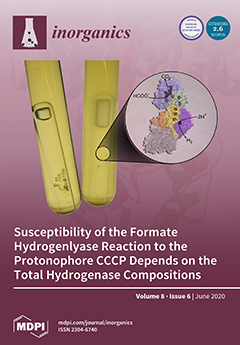There has been a renaissance in the interdisciplinary field of Molecular Magnetism since ~2000, due to the discovery of the impressive properties and potential applications of d- and f-metal Single-Molecule Magnets (SMMs) and Single-Ion Magnets (SIMs) or Monometallic Single-Molecule Magnets. One of the
[...] Read more.
There has been a renaissance in the interdisciplinary field of Molecular Magnetism since ~2000, due to the discovery of the impressive properties and potential applications of d- and f-metal Single-Molecule Magnets (SMMs) and Single-Ion Magnets (SIMs) or Monometallic Single-Molecule Magnets. One of the consequences of this discovery has been an explosive growth in synthetic molecular inorganic and organometallic chemistry. In SMM and SIM chemistry, inorganic and organic ligands play a decisive role, sometimes equally important to that of the magnetic metal ion(s). In SMM chemistry, bridging ligands that propagate strong ferromagnetic exchange interactions between the metal ions resulting in large spin ground states, well isolated from excited states, are preferable; however, antiferromagnetic coupling can also lead to SMM behavior. In SIM chemistry, ligands that create a strong axial crystal field are highly desirable for metal ions with oblate electron density, e.g., Tb
III and Dy
III, whereas equatorial crystal fields lead to SMM behavior in complexes based on metal ions with prolate electron density, e.g., Er
III. In this review, we have attempted to highlight the use of few, efficient ligands in the chemistry of transition-metal SMMs and SIMs, through selected examples. The content of the review is purely chemical and it is assumed that the reader has a good knowledge of synthetic, structural and physical inorganic chemistry, as well as of the properties of SIMs and SMMs and the techniques of their study. The ligands that will be discussed are the azide ion, the cyanido group, the tris(trimethylsilyl)methanide, the cyclopentanienido group, soft (based on the Hard-Soft Acid-Base model) ligands, metallacrowns combined with click chemistry, deprotonated aliphatic diols, and the family of 2-pyridyl ketoximes, including some of its elaborate derivatives. The rationale behind the selection of the ligands will be emphasized.
Full article





